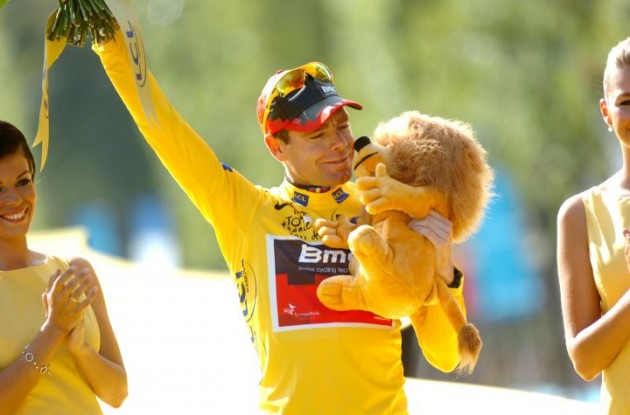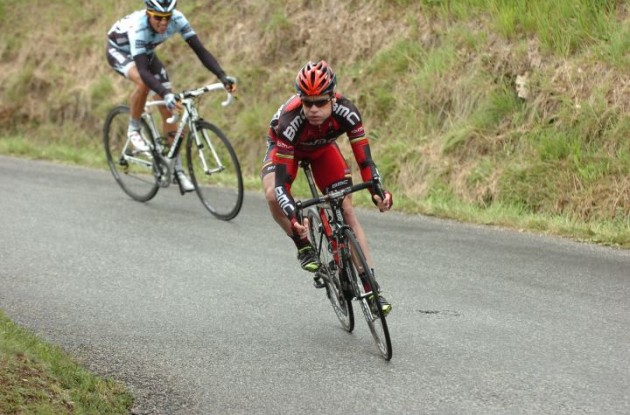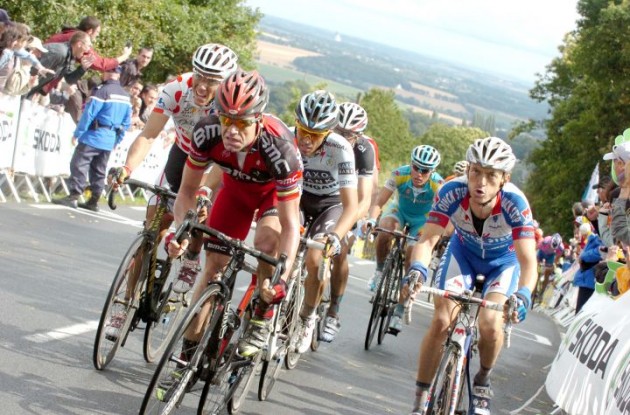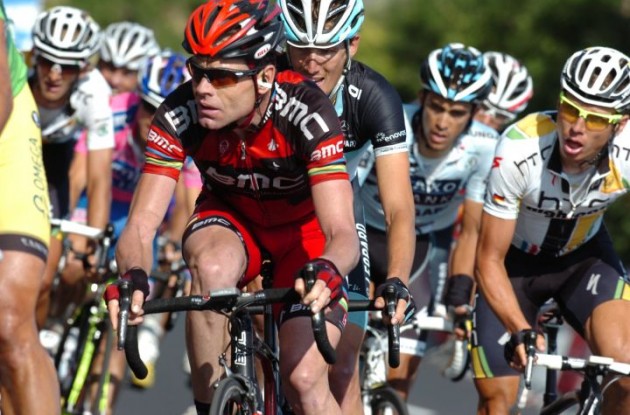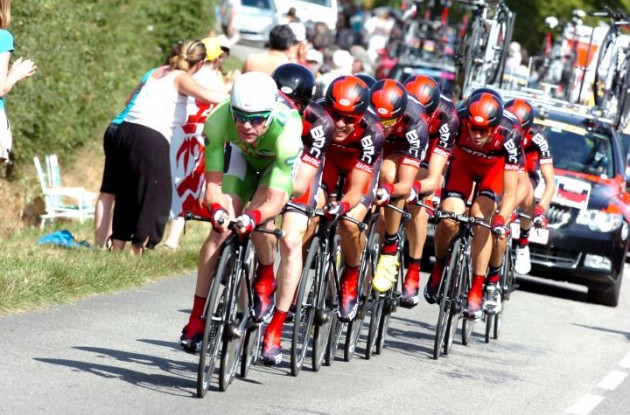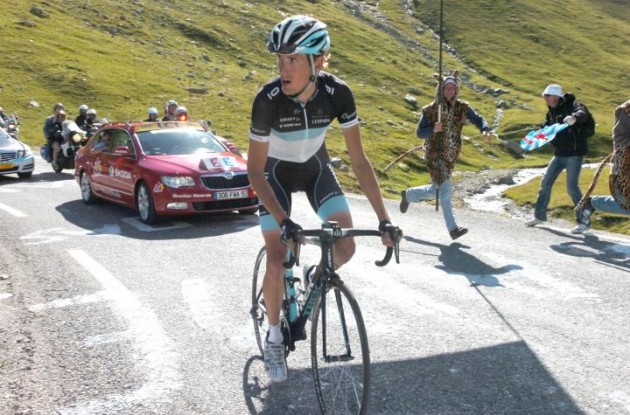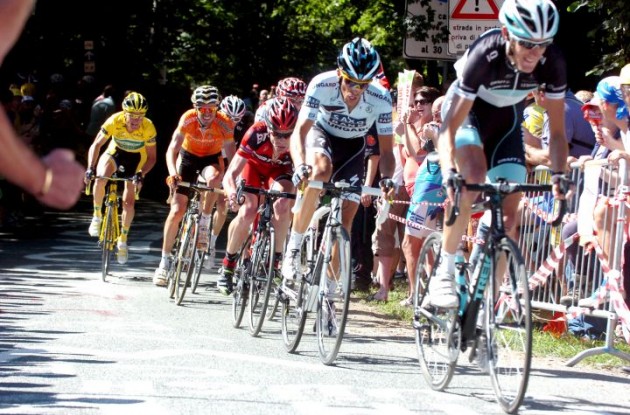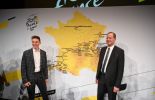2011 Tour de France Postlude
If the 2011 Tour de France had ended after Stage 9, a wag might have dubbed it the Tour de Crash.
If the 2011 Tour de France had ended after Stage 9, a wag might have dubbed it the Tour de Crash. At the end of that stage, six riders who might have made an impact on the race--Bradley Wiggins (Sky), Jurgen van den Broeck (Omega Pharma-Lotto), Alexander Vinokourov (Astana), Tom Boonen (Quick Step), Chris Horner (RadioShack), and Janez Brajkovic (RadioShack)-- had withdrawn because of crash-related injuries. Andreas Kloden (RadioShack), who was injured in a Stage 9 pileup, would withdraw after being being banged up in a Stage 12 crash.
In addition to the withdrawals, Robert Gesink (Rabobank), Levi Leipheimer (RadioShack), and defending champion Alberto Contador (Saxo Bank-Sungard) were delayed by crashes or had their performances impaired by injuries suffered in crashes. Last but not least, vehicles struck Nicki Sørensen (Saxo Bank-Sungard), Juan Antonio Flecha (Sky), and Johnny Hoogerland (Vacansoleil-DCM). The last two riders were hit by a French media vehicle whose driver disregarded instructions not to go forward and sent the men flying. Hoogerland sailed into a barbed-wire fence and wound up with 33 stitches. All of the riders struck by vehicles finished the Tour. Under these circumstances, one might be tempted to say that Cadel Evans's (Team BMC Racing) victory is tainted.
Think again. First of all, in any sport, injuries are part of the action. Second, Evans was injured in a crash in 2010. Was Contador's victory less meaningful because of that? Third, it is important to note that Evans was not involved in a single crash. Why? Because his team had experienced riders who remembered that riders are safest at the front. BMC made sure that Evans was at or near the front at all times. Moreover, Frank and Andy Schleck (both from Leopard-Trek), the first siblings to appear on the Tour podium, did not crash once. The lesson is clear: If you want to win and avoid crashes, ride at or near the front.
Avoiding crashes was not the only thing that went right for Evans. The Australian rode a calculating race and judged situations well. In addition, Evans unleashed his strength when he needed to. He pipped Alberto Contador (Saxo Bank-Sungard) to win Stage 4, strung out the field in pursuit of Andy Schleck to save his Tour in Stage 18, and let fly with a time trial that the Schlecks could not match to win the Tour in Stage 20. Evans finally showed the physical prowess that observers knew that he had.
For many, the thing that kept Evans from winning a Grand Tour was never physical ability. Rather, it was a seeming passivity and lack of killer instinct. Evans does not attack, they said; he follows others' attacks. He should be better than he is, they asserted, but he is a head case.
Mind you, Evans was never bad. He was an accomplished mountain biker before becoming a full-time road racer in 2000. The Australian finished 14th in his first Grand Tour, the 2002 Giro d'Italia, and he wore the maglia rosa for one day. He won the 2006 Tour of Romandy and the 2009 Dauphine Libere. He won stages of Grand Tours and even wore the leader's jersey, but he was never the big winner. He was the Tour runner-up in 2007 and 2008, but he could not get over the hump. The observers said that Evans, with his defensive racing style and lack of confidence, would be another Poulidor, a man would could ride well enough to place well, perhaps well enough to earn the public's affection, but not well enough to win.
The turning point was the 2009 world road race championship in Mendrisio, Italy. At the foot of the day's final climb, Evans followed an attack by Spaniard Joaquin Rodriguez with a counterattack that neither Rodriguez nor Russian Alexander Kolobnev could follow. Evans became world champion.
The months after Evans's victory showed that his world championship had given him confidence. That winter, the Aussie moved from Omega Pharma-Lotto, one of the best classics squads, to BMC, a team that was looking for someone who could ride for the general classification in Grand Tours. The marriage proved to be one made in heaven.
Another sign of Evans's confidence was his victory in the 2010 Fleche Wallonne. The Australian had one final tribulation to endure, however. In Stage 8 of the 2010 Tour de France, he crashed and suffered a hairline fracture in his right arm. Evans took the yellow jersey in that stage, but he knew that he would never be able to keep it. He lost the jersey in the following stage and finished 26th overall, more than 50 minutes behind Contador. His willingness to ride when he was injured, however, said to some that Evans had the grit to win the Tour.
The move to BMC was could not have been better for Evans. This was a squad that was built around him, with veterans such as George Hincapie, who had ridden on eight Tour-winning teams, to make sure that Evans did things such as stay in the front. These veterans and directeur sportif John Lelangue realized that Evans might need to be kept on an even keel emotionally, and they worked at doing so. Moreover, Lelangue put together a plan that would prepare Evans for the 2011 Tour.
In early 2011, Evans probably had the lightest schedule of any of the contenders. When the Tour started, the BMC man had raced only 35 days. In those 35 days, however, he made an impression. The Aussie won Tirreno-Adriatico and the Tour of Romandy. In addition, he finished second in the Dauphine Libere. By the start of the Tour, Evans had sent a message: I am ready to race.
Indeed he was, and so was his team. In Stage 2, BMC turned in a surprising runner-up finish in the team time trial. In Stage 4, Evans outfought Contador for the day's honors. In Stages 12 and 14, Evans withstood the assaults of the Schleck brothers in the Pyrenees. In Stage 16, Evans attacked and gained time on his competitors. That set up the Alpine pyrotechnics in Stages 18 and 19.
In Stage 18, Andy Schleck attacked on the Izoard, 60 km from the finish. The "old" Evans might have panicked and tried to go with the Leopard-Trek man, or he might have tossed in the towel. The "new" Evans attempted to get others in the yellow jersey group to work with him. When they failed to do so, he dropped them like a bad habit on the Galibier and cut Schleck's four-minute lead in half.
The following day, during the ascent of the Col du Telegraphe, Contador and Andy Schleck gapped Evans, whose bicycle had a mechanical problem. The "old" Evans might have tossed in the towel. The "new" Evans got a new bike from the team car and waited for the BMC-led yellow jersey group. The day ended with Evans and the Schlecks together and the Grenoble individual time trial looming.
The following day, Andy Schleck donned the yellow jersey for the Grenoble time trial. Sometimes, the yellow jersey inspires a rider, but it did not give Andy and Frank Schleck, who were first and second on GC, enough inspiration. Evans overtook them early in the time trial and poured on the coal, leaving both riders in his wake. Australia had its first Tour de France champion.
Can Evans win again? Time would seem to argue against it. Evans is the second oldest Tour winner and the oldest Tour winner since World War II. He will need to keep improving, but time would seem to argue that there is no more time for improvement. However, the Australian was not expected to win this year. What it all says is this: Races are won on courses, not by prognostications or by amateur Sigmund Freuds who think that they know who has the guts to win. Let's see what Evans does in the 2012 Tour.

